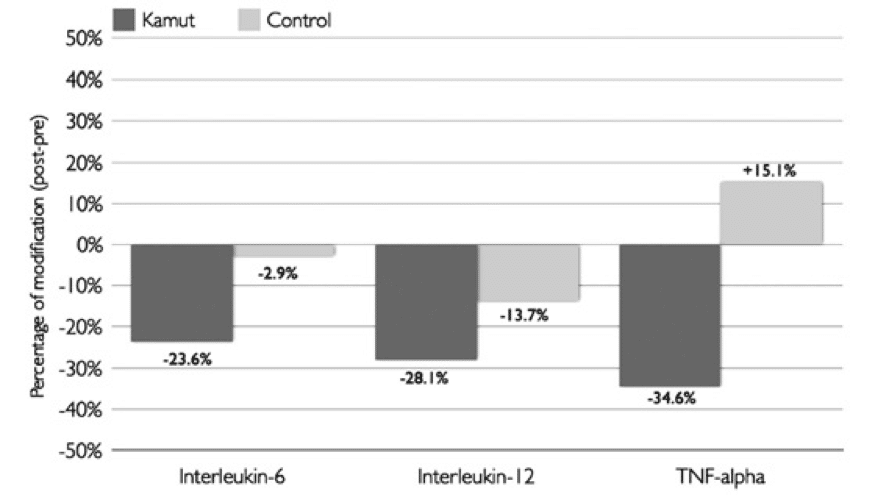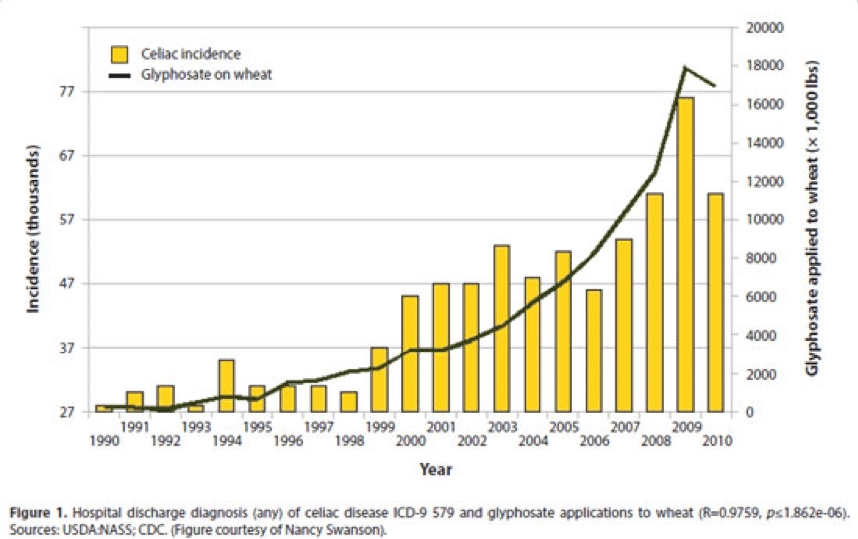Is there anything better than gathering together around a table with friends and family taking time to tell stories, discuss ideas, and break bread? For me and my family, this is a central part of our building community and our loving of life. Meaningful relationships are deepened around a table in the breaking of bread. But for you and your family could that bread be causing harm? Could it be from gluten? What even is gluten in the first place, and why is it making us sick?
When I first began to practice medicine, hardly any patients knew what gluten was or that it may be causing problems. Today is a different story and many are on a gluten-free diet, but not many truly know what gluten is or why it is causing a problem. I was initially very skeptical about what seemed to be another fad diet. Why is a food that has been a foundational part of the human diet become a 21st Century problem? What I came to find out in my research and in listening to my patients was that gluten negatively affects many Americans by contributing to their symptoms and, although it may be difficult, going gluten-free helped my patients in many surprising ways.
Gluten is a group of stored proteins found in grains of the wheat family. These proteins assist with giving grains their shape and elasticity. It is what makes wheat bulky and allows wheat to be baked into fluffy breads. For those who are affected by gluten, when it is eaten it causes inflammation of the gastrointestinal tract and may be so severe that it leads to small intestine destruction. When this occurs, it is called Celiac disease, and the treatment is avoidance of dietary gluten.
Roughly just 15 years ago, 1 in 2500 people worldwide were diagnosed with gluten intolerance. Now, studies and physicians report that people with gluten related symptoms may be as high as 1 in 6 for people living in the United States.
Human beings have been surviving off grains since the time of the first primitive farms. Even wheat, which contained gluten, has been shown to be one of the oldest domesticated crops known in the ancient world. Most of us have also experienced someone who gets symptoms from wheat they eat in America but can go to Italy or other places of the world and eat wheat with no problems. The epidemic of gluten sensitivities which we are facing in America is a relatively new problem. If grains alone were the problem, it does not make logical sense that an old food is creating new problems. So why do people generally feel better on a gluten-free diet? And what specifically is creating this inflammation in gluten containing grains in modern day America?
Reason 1:
The grains of today are genetically and biologically different from the grains in the past and grains from different countries. The grains of the past are referred to as heritage grains. Heritage grains are quite diverse. Examples of these wheats include Emmer, Einkorn and Kamut to name only a few. Today only few specific species of wheat are grown in America. Sadly, almost all the wheat eaten today is high-yield dwarf wheat, which was developed by cross-breeding and genetic manipulation around the year 1960. This grain provides shorter stems and higher yields with increased gluten content. It makes sense economically, but we seem to be paying the price with our health. Studies have found that heritage grains not only don’t cause celiac or gluten sensitivity symptoms, but they are actually protective and reduce inflammation.1

It has also been shown that heritage grains are even better tolerated by celiac patients when compared to rice, a non-gluten containing grain.2 There are many small farms who have begun to grow heritage grains in the United States, and many people who struggle with gluten sensitivities have found they are a good option.
Reason 2:
Research is also showing that it may not be the gluten itself but rather a specific peptide strain located on the gluten molecule that causes the inflammatory response.3 It is seen that many heritage grains which still contain gluten do not contain this peptide thought to be the inducer of inflammation.4 Researchers have also recently learned that the preparation process of wheat once commonly practiced in the past included soaking, sprouting, fermenting and baking using slow rise yeast which severs this peptide bond making the gluten non-reactive to the gastrointestinal tract.5
Reason 3:
In the 20th century we have seen a significant increase in herbicide use in grain farming. Stephanie Seneff, PhD, a senior research scientist at the MIT Computer Science and Artificial Intelligence Laboratory, decided to investigate this correlation on herbicide utilization and adverse gluten responses. She found there was a correlation between the chemical glyphosate and gluten intolerance. Farmers have used this for years to control weeds, but they have also been using it more frequently to dry down the crop right before harvest to make it easier to collect. This is leading to higher chemical residues on the grains we bring into our kitchens. The following graph shows the amounts of celiac disease incidence on the rise and a correlation of the use of glyphosate on wheat production and harvesting. The results are astounding and speak for themselves. 6

It is important to realize that not all people who are sensitive to gluten have inflammation severe enough to cause small intestinal destruction or Celiac disease. A list of gluten sensitivity symptoms includes:
- Diarrhea
- Weight Loss
- Weight Gain
- Headaches
- Gas/bloating
- Fatigue
- Brain fog
- Anemia
- Menstrual irregularities
- Infertility
- Depression
- Anxiety
- Osteoporosis
- Canker sores
- Joint pain
- Numbness of the hands and the feet
- Attention deficit
- Irritability
- Abdominal pain
- Nausea and vomiting
There is little doubt that the increase in these symptoms from current wheat production cannot be discounted. When people are sensitive to gluten containing grains and remove them from their diet, they feel better and these symptoms begin to resolve. It is important that if you think you are sensitive and try going on a gluten-free diet that you remove all gluten containing foods from the diet and are free from them for at least 72 hours to notice a response. The good news is that there are many gluten-free products (even breads and pastas) on the market today making this a realistic option.
Tips for eating grains:
- Only eat whole grains, not processed
- Rotate the grains you eat
- Limit wheat to only once per day or avoid completely if gluten symptoms are experienced
- Heritage grains are best
- Clean, herbicide-free sourcing
Not all grains are bad as they have been providing humans with nutrition and health since the beginning of farming. May the bread you eat be of great quality and may it be broken around your tables along with life-giving conversations as we continue this crusade of healthy living where we discuss how you can have the healthiest family and be the healthiest you.
In gratitude,
Dr. John C. Oertle
Chief Medical Officer
Solidarity HealthShare
References
- Sofi F., Whittaker A., Cesari F., Gori A.M., Fiorillo C., Becatti M., Marotti I., Dinelli G., Casini A., Abbate R., et al. Characterization of Khorasan wheat (Kamut) and impact of a replacement diet on cardiovascular risk factors: Cross-over dietary intervention study. Eur. J. Clin. Nutr. 2013;67:190–195. doi: 10.1038/ejcn.2012.206.
- Zanini B, Petroboni B, Not T, Di Toro N, Villanacci V, Lanzarotto F, Pogna N, Ricci C, Lanzini A. Search for atoxic cereals: a single blind, cross-over study on the safety of a single dose of Triticum monococcum, in patients with celiac disease. BMC Gastroenterol. 2013;13:92.
- Van den Broeck HC, De Jong HC, Salentijn EMJ, Dekking L, Bosch D, Hamer RJ, et al. . Presence of celiac disease epitopes in modern and old hexaploid wheat varieties: wheat breeding may have contributed to increased prevalence of celiac disease. Theor Appl Genet. (2010) 121:1527–39. 10.1007/s00122-010-1408-4
- Pizzuti D, Buda A, D’Odorico A, D’Incà R, Chiarelli S, Curioni A, Martines D. Lack of intestinal mucosal toxicity of Triticum monococcum in celiac disease patients. Scand J. Gastroenterol. 2006 Nov;41(11):1305–11.
- Di Cagno R., De Angelis M., Auricchio S., Greco L., Clarke C., De Vincenzi M., et al. (2004). Sourdough bread made from wheat and nontoxic flours and started with selected lactobacilli is tolerated in celiac sprue patients. Appl. Environ. Microbiol. 70 1088–1096. 10.1128/AEM.70.2.1088-1096.2004
- Samsel A., Seneff S. Glyphosate, pathways to modern diseases II: Celiac sprue and gluten intolerance. Interdisciplinary Toxicology. 2013;6(4):159–184.

